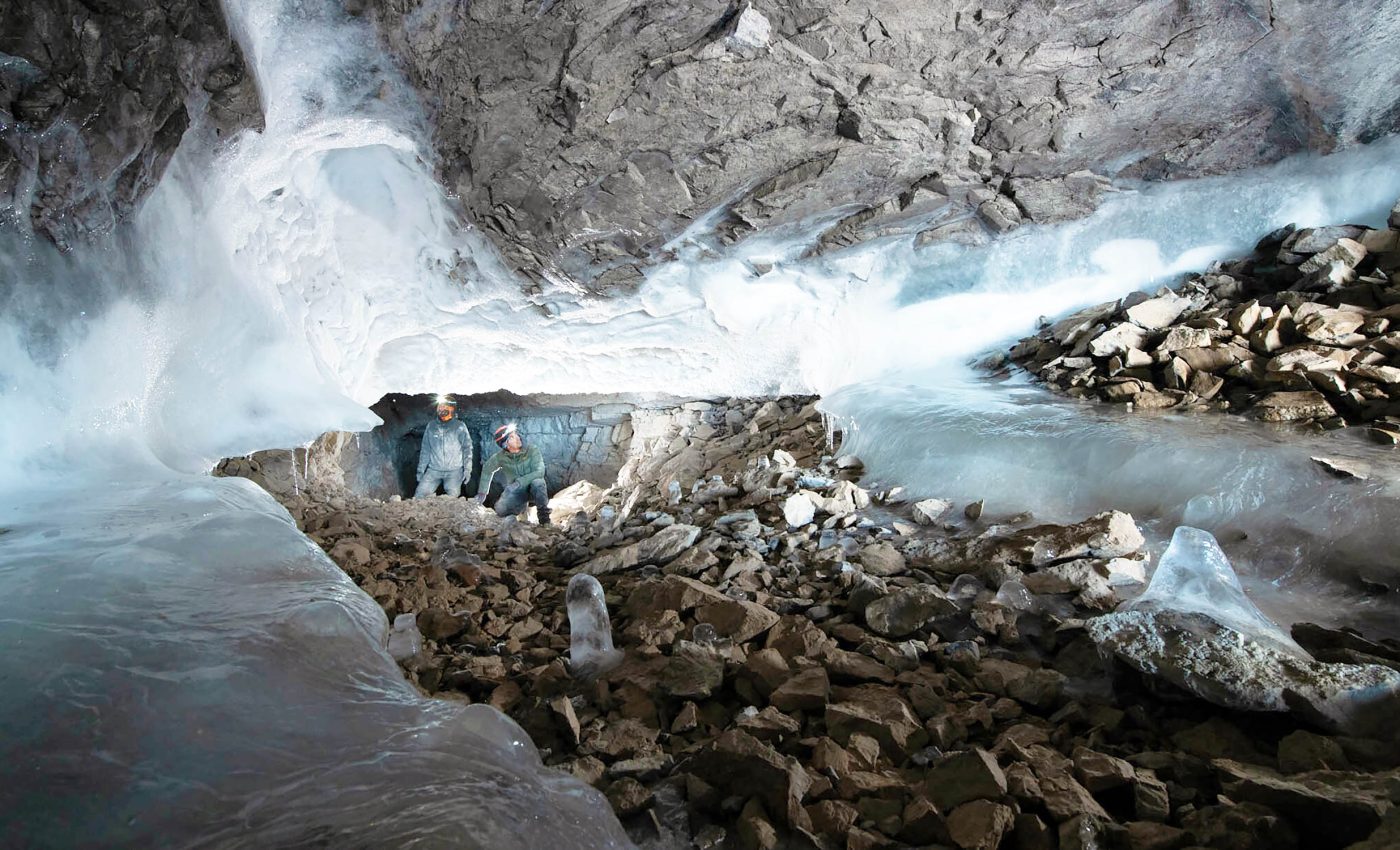
Hidden Greenland cave reveals the Arctic once fully melted under a mild climate
The Arctic wasn’t always frozen and lifeless. Millions of years ago, parts of northern Greenland were wet, green, and alive with flowing water. Beneath its present-day ice, a cave now holds evidence of that forgotten warmth.
A team of scientists from the University of Innsbruck found clues in layers of mineral deposits that have rewritten what we know about the Arctic’s past.
The study reveals that the region once experienced long stretches without permafrost. The discovery shows how quickly this icy world can react when temperatures rise.
“These deposits are like tiny time capsules,” said study lead author Gina Moseley. “They show that northern Greenland was once free of permafrost and much wetter than it is today.”
Greenland was once warm
Cove Cave lies on Greenland’s remote northern coast, accessible only by small aircraft and a long hike through untouched wilderness.
Inside, the team found calcite deposits formed by dripping water. Such minerals can’t grow in frozen ground, so their presence means Greenland’s Arctic once thawed deeply enough for liquid water to move underground.
The scientists dated these formations to between 9.5 and 5.3 million years ago. During this time, air temperatures were at least 55°F (13°C) higher than today, and carbon dioxide levels reached just above 310 parts per million.
Ocean surface temperatures were a few degrees warmer too. Greenland, which now lies buried in ice, once pulsed with moisture and warmth.
The Arctic cooled Greenland
The cave’s story isn’t one of endless summer. Between the warm phases came colder intervals when permafrost returned and water flow stopped.
Around 6.3 to 5.6 million years ago, glacial debris entered the cave system, marking brief periods when ice advanced across the landscape.
The minerals record these changes like pages in a diary – each layer showing a shift from frozen stillness to flowing warmth.
Ocean records from the same era show matching patterns. When sea temperatures fell, the ground refroze. When the oceans warmed again, the cave revived.
The evidence links Greenland’s land temperature to global ocean currents that shifted heat northward and southward.
“From this we can see that the climate reacted strongly and rapidly to changing boundary conditions,” said Moseley.
The Earth didn’t need extreme carbon dioxide levels to melt Greenland. Even moderate increases were enough to reshape its environment.
Sunlight patterns shaped the Arctic
These ancient climate swings followed predictable beats. The planet’s tilt and orbit changed the sunlight reaching the poles.
During certain orbital alignments, sunlight strengthened, warming Greenland’s soil and melting permafrost. At other times, weaker sunlight encouraged cold phases.
Between 9.6 and 9.3 million years ago, something strange happened – the Arctic warmed while Antarctica cooled. Later, both poles began moving in sync again.
The team suggests that vegetation played a part. When dense forests covered the Arctic, darker canopies absorbed more heat. As forests gave way to shrubs and tundra, the ground reflected sunlight and cooled faster.
This tug-of-war between land cover and light created a chain reaction. More warmth led to more evaporation and cloud cover, locking in moisture. More cooling turned the surface pale and reflective, driving ice formation.
The cave’s oxygen isotope data trace these changes with striking detail, showing how easily the Arctic switched from thawed to frozen.
Chemistry of the Greenland cave
Inside Cove Cave, even the chemistry of the minerals tells a story. The team found sudden spikes in silicate concentrations after each cold spell.
These signals likely came from glacial erosion, carried into the cave by meltwater as the ice retreated. Each chemical trace marked a moment when Greenland’s surface shifted from ice to soil again.
The findings match computer models suggesting glaciers grew and shrank rapidly in northern Greenland during the Late Miocene.
The ice didn’t stay for long – it advanced, melted, and reappeared in rhythm with Earth’s orbit. The cave’s record connects local changes in permafrost to global shifts in carbon dioxide and sea ice.
Lessons for Greenland and the Arctic
Moseley and her team point out something unsettling. The conditions that melted Greenland millions of years ago don’t seem so different from today.
Back then, permafrost vanished when carbon dioxide levels passed 310 ppm. Today, they’re above 420 ppm.
“The Arctic has never been a stable system,” said Moseley. “It shows how dynamic this region is and how quickly environmental conditions can change.”
That same sensitivity makes today’s Arctic particularly vulnerable. Modern warming already shows signs of reaching the same threshold.
If temperatures rise just a few degrees more, widespread thawing could release massive stores of carbon and methane trapped in frozen ground.
Past warmth, future threat
“Our results highlight how sensitive the Arctic climate is and that every fraction of a degree matters,” said Moseley. The cave’s message is clear: even small changes can have long-lasting consequences.
Back then, warmth reshaped Greenland’s landscape. Today, it could reshape our planet’s future.
“Every small step we take to limit warming helps to avoid these feedbacks and to reduce the impacts of climate change,” she added.
Those ancient layers of calcite, hidden deep beneath Greenland’s Arctic ice, aren’t just relics. They’re reminders that even the coldest places on Earth remember how to melt.
The study is published in the journal Nature Geoscience.
—–
Like what you read? Subscribe to our newsletter for engaging articles, exclusive content, and the latest updates.
Check us out on EarthSnap, a free app brought to you by Eric Ralls and Earth.com.
—–













